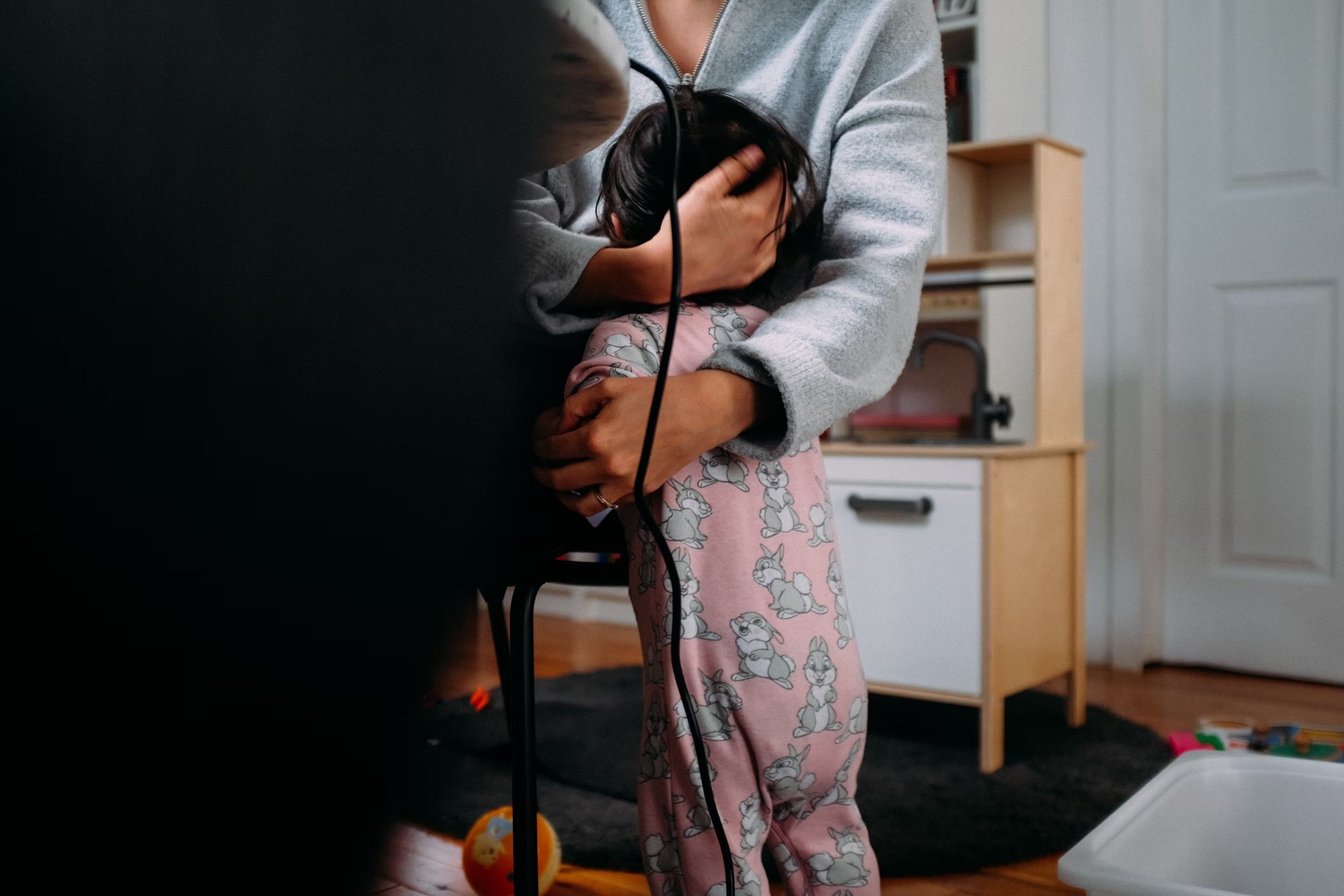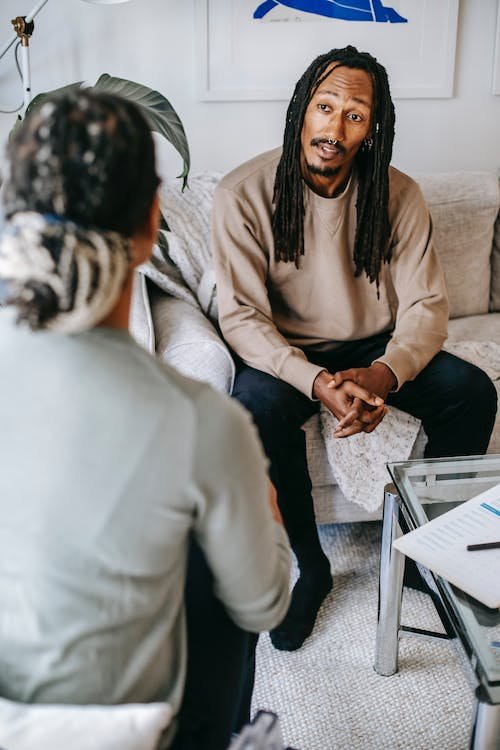
When Body Image Becomes Inherited: Breaking the Cycle from Mother to Daughter
“You’d be so much prettier if you lost weight.”
If those words sound familiar, you’re not alone. For many women, body image struggles didn’t begin with social media they began at home. In this blog, we explore how harmful body talk is often passed down from mother to daughter, creating generational cycles of shame and self-criticism. From side comments at dinner to watching our mothers diet and self-criticize, these subtle messages shape our beliefs about worth and appearance.
But we have the power to change the narrative. This piece invites readers to reflect, reframe old beliefs, and start healing inherited body image wounds. Learn simple, compassionate practices to break the cycle and raise the next generation to feel at home in their bodies no matter the size.
generational trauma
body image healing
mother-daughter body image
breaking body image cycles
Latina body image
inherited body shame
body positivity
intuitive eating
stop dieting culture
self-worth at any size
body neutral parenting
intergenerational healing
body image therapist
inner child healing
Latinx body shame
emotional eating recovery
body image and childhood
how to heal body image
body image and self-esteem
reparenting yourself

25 Things I’ve Learned in My First 5 Years as a Trauma Therapist
As a trauma therapist specializing in childhood trauma, sexual abuse, and generational healing, I’ve spent the last five years walking alongside survivors as they reclaim their voice, safety, and sense of self. In this blog, I’m sharing 25 powerful lessons I’ve learned through real-life therapy not textbooks. From understanding how trauma lives in the body to why healing doesn’t require reliving every detail, this post is for anyone who wants to know what trauma-informed therapy really looks like. Whether you're seeking therapy or just beginning to explore your healing journey, these insights offer validation, encouragement, and hope.

Breaking the Cycle of Silence: The Dangers of Ignoring Sexual Abuse in Families
Breaking the Cycle of Silence: The Dangers of Ignoring Sexual Abuse in Families
Silence has long been a survival mechanism in families affected by abuse, but at what cost? Generations of secrecy have allowed abusers to remain protected while survivors are left carrying the weight of their trauma alone. Many are told to stay quiet—to keep the family together, to avoid shame, to forgive and forget. But silence does not erase abuse; it enables it.
The reality is that most survivors are harmed not by strangers, but by people they know and trust—a relative, a family friend, even a parent. When families refuse to acknowledge abuse, they reinforce a cycle of harm, leaving survivors to struggle with not just the trauma itself but also the betrayal of those who should have protected them.
Why do families stay silent? Whether it’s denial, generational conditioning, or religious pressure, the reasons are many, but none justify the harm done. Breaking the cycle starts with speaking up, believing survivors, and holding abusers accountable—even when it’s difficult, even when it disrupts the family dynamic. Silence has protected abusers long enough. It’s time to choose the side of survivors.
In this blog, we’ll explore why families remain silent, the impact this has on survivors, and most importantly, how we can create a culture where speaking up is the norm, not the exception.

The Legacy of 2000's Skinny: How Body Trends Shape Self-Esteem Today
During my college years, I weighed myself twice a day, scrutinized my body in the mirror, and meticulously counted calories. At 5’1” and 125 lbs, I was deemed overweight by the BMI chart, which I later learned isn't BIPOC-friendly. My mother once told me, “You know you have an eating disorder.” At the time, it didn’t feel like an eating disorder; it felt “healthy” and “normal.”
Social media played a significant role in shaping my perception of health. Instagram fitness models promoted detox teas, YouTubers showcased extreme diets, and Tumblr glorified thigh gaps and prominent collar bones. These platforms taught me body-checking rituals that consumed my thoughts and dictated my actions, leading to an unhealthy obsession with my weight.
Reflecting on this period, I now understand that these behaviors were not isolated experiences but shared by many women influenced by ever-changing body trends. From the hourglass figure of the 1950s to the extreme thinness of the 2000s, each era imposed its own standards, impacting self-esteem and body image. Recognizing these trends and their effects is crucial for fostering self-acceptance and mental well-being today.

Beyond Comparison: Why Your Trauma Is Valid, No Matter What
Comparison isn't just about stealing joy; it steals validation too. It's like a never-ending game where we measure our pain against others'. But here's the thing: comparing our experiences isn't just about invalidating ourselves; it's also about downplaying how much we're really hurting. We might think if we brush it off and pretend it's not a big deal, we'll magically feel better. Cue the buzzer in our imaginary game show, but that's wrong. The first step to healing is acknowledging and validating what you've been through. All this running around, trying to invalidate, minimize, or suppress our pain, only holds us back from starting our healing journey.

Lost in Doubt: How Abusers Damage Your Self-Trust
In the aftermath of trauma, rebuilding self-trust is a journey fraught with challenges. Often, we overlook the erosion of trust in ourselves amidst experiences of betrayal, abuse, or relentless criticism. In my own path to healing, I uncovered this truth gradually, recognizing my indecisiveness in daily choices and the weight of others' perceptions on my sense of self. It wasn't until I understood the insidious tactics of emotional manipulation—gaslighting, constant criticism, and questioning of loyalty—that I could begin to address the damage inflicted upon my self-trust.
Recognizing these patterns is the first step towards healing, whether you're currently in an abusive relationship or grappling with the aftermath. Understanding gaslighting's distortion of reality, the toxic impact of constant criticism, and the insidious questioning of your loyalty empowers you to reclaim your autonomy. In acknowledging these truths, you pave the way for healing and rebuilding your self-trust.
Stay tuned for our next blog, where we'll explore actionable strategies to regain confidence and navigate the journey to self-trust after leaving an abusive relationship.

Struggling with Journaling? Try These Effective Emotional Processing Techniques
Are you struggling with traditional journaling methods? You're not alone. Many individuals find it challenging to put pen to paper and pour out their thoughts and emotions. If this sounds familiar, fear not—there are alternative methods to help you process your feelings effectively. In this blog post, we explore three powerful alternatives to journaling: audio recording, art, and music. Discover how these creative outlets can provide a therapeutic way to externalize your thoughts and emotions, without the pressure of traditional journaling. Join us on a journey to emotional wellness and find the method that resonates with you.

Suppressed Emotions and Generational Trauma in Latino Families
In many Latino families, the unspoken rule is clear: emotions are to be suppressed, not expressed. Phrases like 'Los hombres no lloran' (men don't cry) and 'Aguántate' (tough it out) echo through generations, instilling the belief that showing vulnerability is a sign of weakness. But what are the consequences of this emotional suppression? From strained relationships to mental health struggles, the impact is profound. It's time to break free from this cycle of silence and start healing the wounds of generational trauma. Join us as we explore the journey toward emotional authenticity and resilience in Latino families.

The Journey To Trauma Healing
The Journey To Trauma Healing and Allowing Yourself The Space To Work Through Your Emotions

Embracing the Healing Power of Self-Compassion

Therapy Expectations vs Reality

How Is Talking To A Therapist Different From Talking With A Friend/Family?

What To Expect In Your First Therapy Session

Beginner Guide To Therapy
Contact us.
For additional information or to schedule a free 20 minute consultation.

